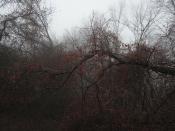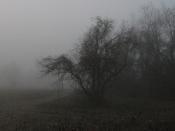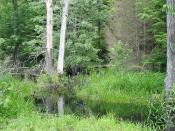The term 'wetlands' covers a wide range of water based environments. They can be natural or man made, although most people think of natural environments first when they hear the term wetlands. There is no one definition of wetlands, because of the range of different types. One, broad definition of a wetland is 'an area of land where the water level remains near or above the surface of the ground for most of the year'. Some examples of naturally occurring wetlands are billabongs, swamps, creeks, lakes, mangroves, marshes, oases and rivers. Man made wetlands include things like dams, artificial lakes, sewage ponds and stormwater retention basins.
Some wetlands cycle through 'wet phases' and 'dry phases' classified by wether or not there is water present. Which phase a wetland is in can effect the plants and animals present. An advantage of wetlands is that in some situations they can be used to clean up the waterways be filtering out pollutants.
This does not mean however that they can be recklessly polluted.
Wetlands, particularly the naturally occurring sort, support a wide range of plants and animals. They typically have many birds as well as fish. There are many different sorts of insects present, from tiny boatmen to large dragonflies. They also support other water associated creatures such as frogs crabs and turtles.
Because of the many things that are considered wetlands, there are hundreds of examples in Australia alone. Kakadu is a well known wetland in the Northern Territory that is of national significance. Lake Eyre is another well known Australian wetland. Locally, the mangroves at St Kilda are also of national significance.
Wetlands are under threat from a range of different things. People destroy or change wetlands to allow for new developments and clear the land around them which...


